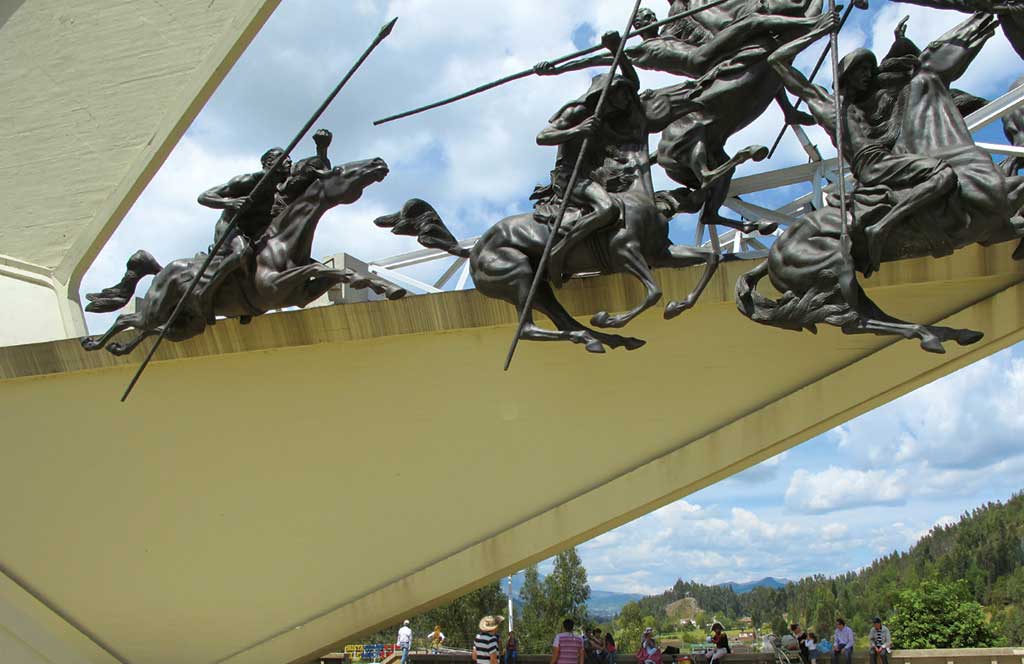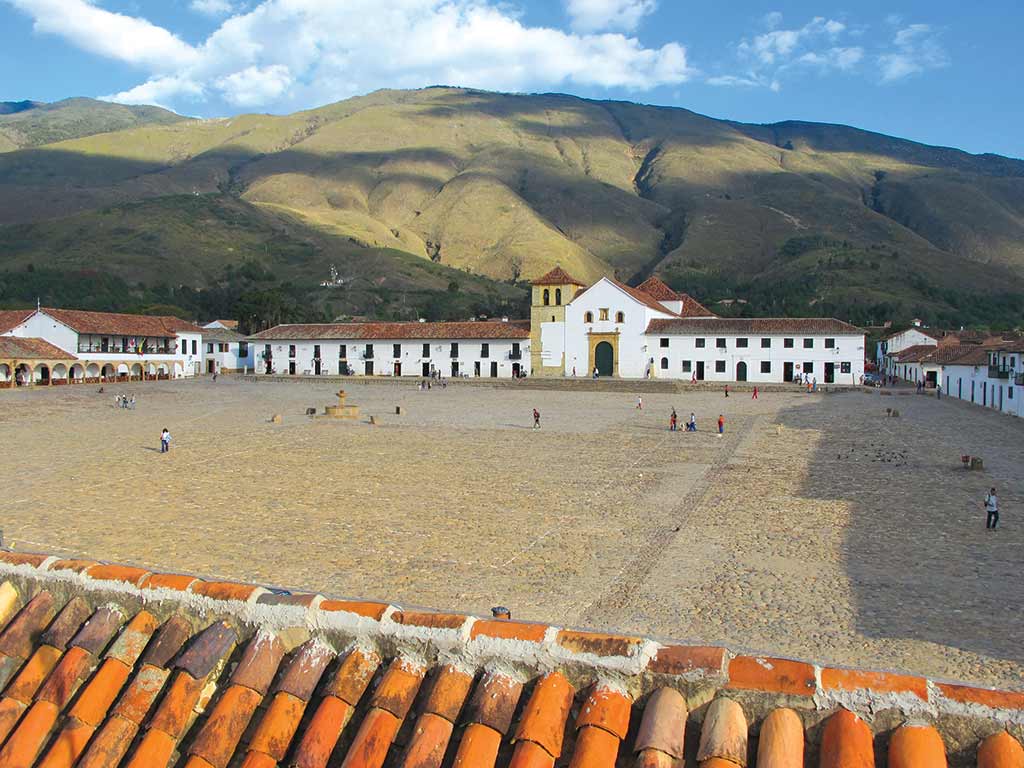Located north of Bogotá, the mountainous departments of Boyacá, Santander, and Norte de Santander (these last two are known collectively as the Santanderes) are rich in history, natural beauty, and outdoor activities. The countryside is dotted with historic colonial towns, including two of the most beautiful and well-preserved in Colombia: Villa de Leyva and Barichara. The scenery of the region runs the gamut from the desert landscape near Villa de Leyva to the bucolic rolling hills and pastures of agriculturally rich Boyacá, and from the awe-inspiring Río Chicamocha canyon to the dramatic snowcapped peaks of the Sierra Nevada del Cocuy (Cocuy Range).
There are good public transportation links throughout Boyacá, but this is also a fairly easy place to drive.Outdoor activities are the draw here, like trekking in the Sierra Nevada del Cocuy and white-water rafting, caving, and paragliding near San Gil. Except for the frenetic and modern Bucaramanga, stoic Tunja, and the border city of Cúcuta, a refreshingly slow pace prevails. The pueblos of Boyacá are easily accessed from Bogotá and can even be visited on a long weekend. It will take a little more time to discover Santander, located between Bogotá and the Caribbean coast. Although most people only stop in the sultry city of Cúcuta on their way to Venezuela or on a visa run, it is a pleasant surprise. The historic pueblo of Pamplona is the most chilled-out place in all of Norte de Santander.
Boyacá and the Santanderes
Before the Spanish conquest, Boyacá was part of the Muisca heartland. Hunza, where present day Tunja is located, was the seat of the Zaque, one of the Muisca leaders. The Sun Temple, one of the Muiscas’ sacred sites, was in Sogamoso, northeast of Tunja.
Boyacá and the Santanderes played a major role in the struggle for independence. In 1811, Boyacá became the seat of the Provincias Unidas de la Nueva Granada (United Provinces of New Granada), the first republican independent government. It was in Boyacá in 1819 that the two decisive battles of independence were fought: the Batalla del Pantano de Vargas (Battle of the Vargas Swamp) and the Batalla del Puente de Boyacá (Battle of the Bridge of Boyacá). These battles marked the end of Spanish domination in Colombia.

Los Lanceros, the memorial sculpture of the Batalla del Pantano de Vargas. Photo © Andrew Dier.
Santander was one of the more dynamic regions in 19th-century Colombia, with an export economy based on the cultivation of quinine, coffee, cocoa, and tobacco. In the early 20th century, Norte de Santander became the first major coffee-producing region in Colombia.
The mid-20th-century fighting between Liberals and Conservatives was particularly acute in Santander and Norte de Santander. In 1960, the Ejercito de Liberación Nacional (National Liberation Army) or ELN guerrilla group was born in rural Santander.
The region has experienced steady economic growth since the early 2000s. Bucaramanga, the capital of Santander, has become a prosperous center of manufacturing and services. Cúcuta, in the neighboring Norte de Santander department, is a center of commerce whose fortunes are linked to Venezuela’s.
While poverty is widespread in the Boyacá countryside, the area is an important agricultural center and supplies Bogotá with much of its food. The departmental capital of Tunja has also become a major center of learning: It is home to 10 universities.
There are three main draws in Boyacá and Santander: the lovely colonial town of Villa de Leyva, the snowcapped wonderland of the Sierra Nevada del Cocuy, and, in Santander, the action-packed area around San Gil, including the nearby town of Barichara.

Villa de Leyva, main square. Photo © Andrew Dier.
Villa de Leyva can be visited in a short two-day excursion from Bogotá, but you could easily spend a couple more relaxing days seeing all the sights, including a hike to Laguna Iguaque. Add on a day to visit the churches of Tunja, but be sure to confirm hours beforehand. To further explore Boyacá, extend your visit for a couple of days to the area around Sogamoso, particularly the postcard-perfect towns of Iza and Monguí and Lago de Tota. There are good public transportation links throughout Boyacá, but this is also a fairly easy place to drive.
Getting to the Sierra Nevada del Cocuy is a schlep (11 hours by bus from Bogotá), so a trip there requires a minimum of 4-5 days to make it worthwhile. To just do day hikes into the park, base yourself in either Güicán or El Cocuy, or nearer to the park in one of several lodges. To do the six-day circuit around the park, plan on 10 days so as to include a day or two of acclimatization before you embark. This is a remote area and there are fewer public transportation options. Buses depart for the area from Tunja. Roads are for the most part in good shape.
San Gil and Barichara have a lot to offer, so plan on spending at least three days. Barichara is a much more beautiful base for exploring the region, but San Gil is home to the main adventure sport tour operators.
There are good public transportation links between Bucaramanga and San Gil and between San Gil and Barichara. However, getting from Bucaramanga and San Gil to Tunja or Villa de Leyva is not fun, as the highway is often saturated with big trucks and buses. On holidays it can be difficult to get a seat on a bus out of or to San Gil, an intermediary stop between Bucaramanga and Bogotá.
Between Villa de Leyva and San Gil it is 6-7 hours, with a change of bus in Barbosa and/or Tunja. Even though San Gil and the Sierra Nevada del Cocuy are only 75 kilometers as the crow flies, to get from one to the other, you must transfer buses in Tunja, requiring more than 15 hours on various buses.
There’s frequent bus service between Bucaramanga and Pamplona/Cúcuta.
Excerpted from the First Edition of Moon Colombia.